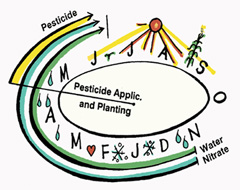|
Agronomy Water Quality Research Facilities |
||||
|
FACILITIES Water Quality Field Station (ACRE)
Experimental Drainage Project (SEPAC) LINKS Environmental Sciences & Engineering Institute (ESEI) Center for Technology Transfer & Pollution Prevention
|
 |
|||
|
|
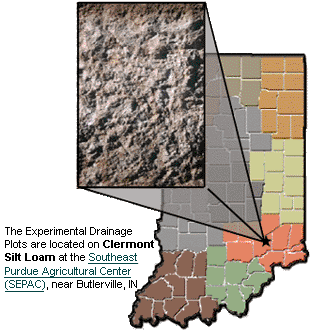 |
|||
The
site is 6.2 ha (15 acres) and supports two replications of tile
spacing plots at 5-, 10-, 20-, and 40-meter spacing, with 0.75 m
nominal tile depth and 0.4 % slope. Huts contain flowmeters and
sampling equipment.
With a length of 225 meters (740 ft) and a width of at least 5 meters (16 to 66 ft) the plots are large enough for a tractor with standard equipment to do standard management practices. These plots were under continuous corn for ten years and are now under corn-soybean rotation.
The tiles under the 5-, 10-, and 20- meter plots are connected to
tipping bucket flow gauges. The gauges connect to a computer, which
acts as a datalogger and also triggers an automatic sampler after
a preset amount of flow.
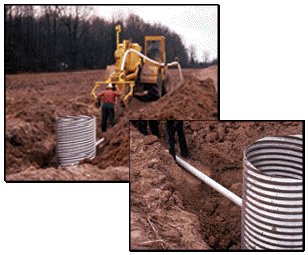 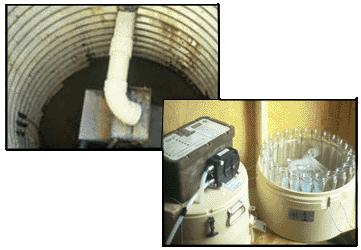 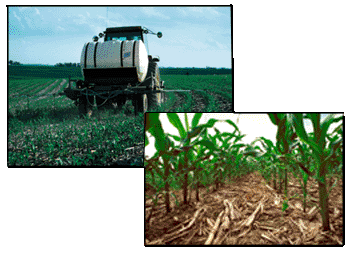 Drain
tiles were established on the margin of each plot, so that each
plot is an isolated sample collection area with automatic surface
and/or subsurface samplers controlled by flowmeters. The tiles allow
measuring, monitoring, and subsurface sampling as rainfall on the
plot flows through the soil. The volume of water and concentration
of transported chemicals can be determined for each plot as frequently
as desired.
|
||||
 |
||||
|
|
||||
 |
||||
|
||||

